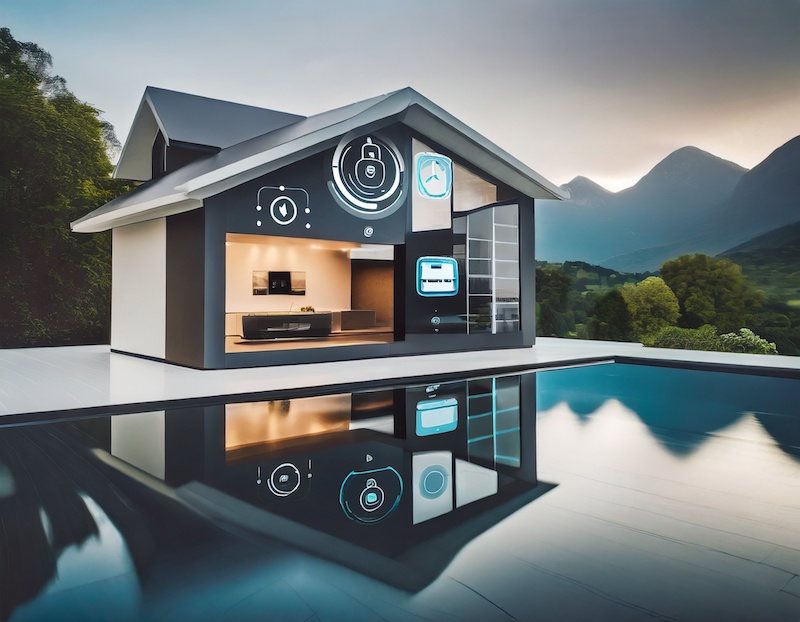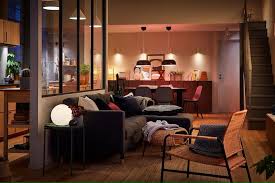In today’s digital age, the smart home revolution is redefining modern living by integrating technology that not only simplifies daily tasks but also significantly boosts the efficiency and comfort of our homes. By leveraging smart home automation, homeowners can enjoy the dual benefits of energy savings and a more sustainable lifestyle. Below, we explore practical ways to harness the potential of smart home features, making your home smarter, more eco-friendly, and more comfortable.
The Smart Connection: Energy Savings Meet Home Automation
Smart home technology and energy savings are increasingly intertwined, offering a promising avenue for homeowners to reduce both their environmental footprint and utility bills. A smart home utilizes advanced sensors, intelligent thermostats, and automated systems to optimize energy consumption without sacrificing comfort. For instance, smart thermostats can learn your schedule and temperature preferences, adjusting your home’s heating and cooling systems more efficiently than ever before, potentially leading to over 25% savings on your energy bills. Such technologies not only contribute to significant energy savings but also enhance the overall living experience by maintaining optimal comfort levels automatically.
Harnessing Automation for Efficient Energy Use
Optimizing energy use through smart home features involves several practical steps that can be implemented seamlessly into any home environment. According to Liaison Technology Group, first, installing smart lighting systems can drastically reduce power consumption. These systems allow for remote control of lighting, and they can adjust the intensity based on the time of day or occupancy in the room. Secondly, smart appliances, like refrigerators and washing machines, can be set to operate at times when energy costs are lower, thanks to their ability to connect to the internet and fetch real-time utility rate information.
Another key aspect is the use of smart power strips and outlets, which help eliminate phantom loads — energy that is wasted when devices are not in use but are still plugged in. These smart devices ensure that power is only supplied when devices are actively in use, thereby reducing unnecessary power consumption.
Building a Comfortable and Eco-Friendly Home
Creating a living environment that is both comfortable and environmentally friendly is no longer a challenge with today’s smart home technologies. High-tech solutions such as automated blinds and smart HVAC systems adjust based on real-time weather conditions and indoor temperatures, ensuring optimal comfort while also conserving energy. For example, during the hottest parts of the day, automated blinds can close to keep out excessive heat, reducing the burden on air conditioning systems.
Additionally, integrating indoor air quality monitors that sync with your smart home system can significantly enhance the health and comfort of your living space. These devices monitor pollutants and humidity levels, and can control air purifiers and dehumidifiers accordingly, maintaining a healthy indoor environment.
Practical Examples of Automation for Energy Efficiency
To illustrate the impact of smart home automation, consider the example of a smart thermostat that uses geofencing technology. This system detects when you are nearing home and adjusts the temperature to your preferred setting just in time for your arrival, ensuring comfort while minimizing energy waste during the hours when you are away.
Moreover, smart water heaters are another example of efficient use of technology. These devices can be programmed to heat water only when needed, and their accessible interfaces allow homeowners to monitor and control water temperature and usage, leading to reduced energy consumption and lower utility bills.
Smart Home Solutions for Every Household
The beauty of smart home solutions lies in their versatility and scalability, making them suitable for every household, regardless of size or budget. Start small by integrating smart bulbs and smart plugs, which are relatively inexpensive and offer a glimpse into the convenience of home automation. As you become more accustomed to the functionality, scaling up to more comprehensive systems like complete home automation kits can be the next step.
Fun Fact to Wrap Up
Did you know that if every household in the U.S. implemented basic smart home energy efficiencies, the energy savings would be equivalent to shutting down 50 entire power plants every year? This not only highlights the potential impact of smart home technologies on energy conservation but also underscores the transformative power of these systems in fostering a more sustainable future.
Smart home automation represents a significant stride toward more efficient, comfortable, and sustainable living. By embracing these technologies, homeowners can enjoy enhanced convenience while actively contributing to global energy conservation efforts. Embrace the future of living today and start reaping the benefits of a smarter home.











